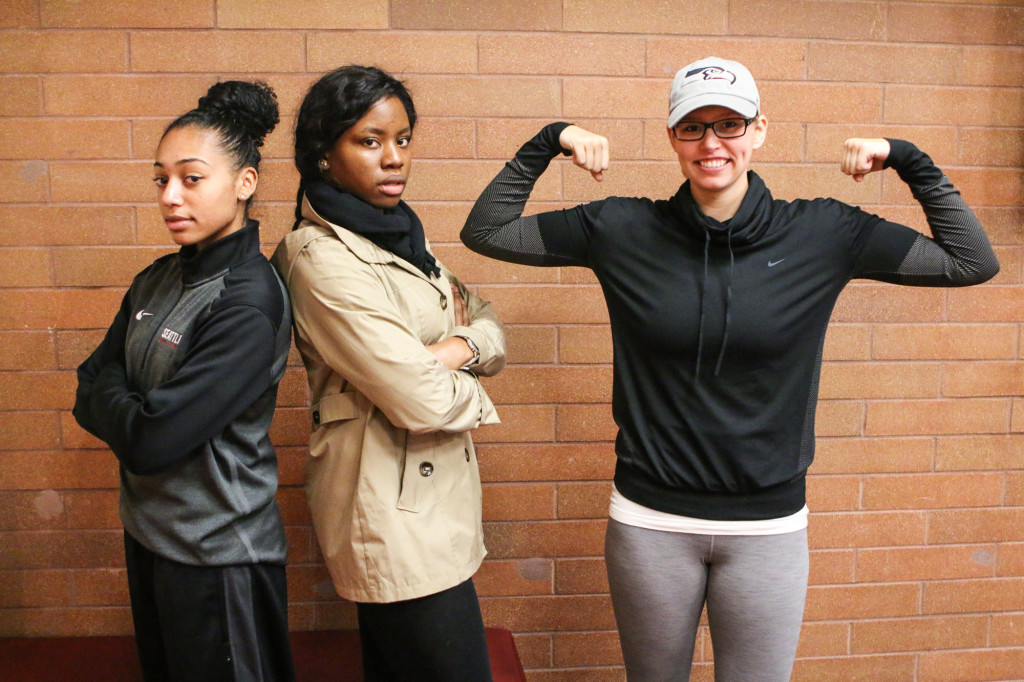For many, women’s and men’s basketball conjure very different expectations. Longstanding jokes among the sporting community belittle the WNBA and women’s basketball in general as less serious than men’s basketball. Seattle University students and young female athletes alike are looking to reverse the stereotype.
Upon receiving the 2014 Dick’s Sporting Goods catalog, 12-year-old Arizona basketball player McKenna Peterson set out to address the seeming injustice head-on. As Peterson saw it, the catalog grossly underrepresented female athletes, inserting their photos only as spectators and consumers of nice shoes. In a strongly-worded letter to Dick’s, McKenna expressed her anger at the company’s failure to properly market their goods to their female customer base. In doing so, Peterson argued, they are further minimizing the hard work of female athletes.
In response to Peterson’s letter, the Spectator sat down with three players on Seattle U’s women’s basketball team to discuss their experience with sexism in their sport.
Kaylee Best, Wilma Afunugo and Kristin Stoffel agreed that the overall stigma around women basketball players is the greatest insult.
This prejudice is made most evident by the remarkably low attendance by students of women’s basketball games. The players explained that they have experienced this problem at both the high school and collegiate level.
“There would always be more people at the guys’ games,” Wilma Afunugo said. “But they weren’t as good as us. I just felt like people would go to the guys’ games because they were guys and they do all the fancy stuff, but we do fancy stuff, too.”
But spectators don’t see it, she said.
“It was the same thing at my high school. If we played after the boys we’d have no fans because they’d all leave, but if we played before the boys we’d have fans in the second half or the fourth quarter because people would get there early for the guys’ games,” Kaylee Best said.
An argument often circulated in the NCAA claims that a contributing factor to the meager attendance of women’s sports games is the distinctive skill set female athletes have. Women’s basketball is marked by its emphasis on player and ball movement, rather than the high-flying athleticism of playing off the rim and profuse dunking typically associated with male players.
Stoffel addressed the presence of this prejudice in the Women’s National Basketball Association (WNBA), as well as the continual quips and jokes made to undermine female players’ talent.
“It’s not fair because we [as women] have a different skill set but that doesn’t mean [WNBA players] aren’t the very best in their sport,” Stoffel said.
“We spend the exact same number of hours in the gym in the week that the boys’ team does,” Best said.
When advising young female athletes like Peterson, the players’ message is one of encouragement and resiliency.
“It’s not the last time that’s going to happen. Keep voicing her opinion, keep working hard to become the best basketball player she can be regardless of her gender. Keep pointing out things like the catalog because that is the only way anything is going to change,” Best said.
The just of the matter is, according to Agungo, is simple. “We play just as hard as the guys.”
Darlene may be reached at dgraham@su-spectator.com








